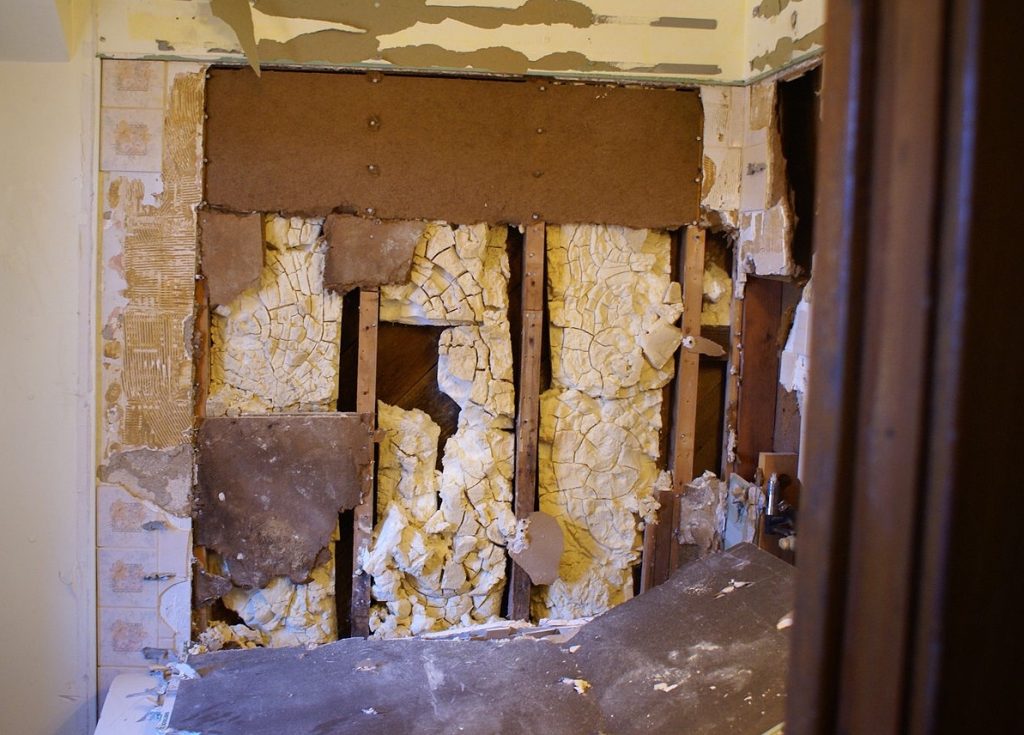What Is UFFI?
Urea-formaldehyde foam insulation (UFFI) was developed in Europe in the 1950s as an improved means of insulating difficult-to-reach cavities in house walls. It is typically made at a construction site from a mixture of urea-formaldehyde resin, a foaming agent and compressed air. When the mixture is injected into the wall, urea and formaldehyde unite and “cure” into an insulating foam plastic.
During the 1970s, when concerns about energy efficiency led to efforts to improve home insulation in Canada, UFFI became an important insulation product for existing houses. Most installations occurred between 1977 and its ban in Canada in 1980.
“Why Was UFFI Banned?”
In the insulating process, a slight excess of formaldehyde was often added to ensure complete “curing” with the urea to produce the urea-formaldehyde foam. That excess was given off during the curing, almost entirely within a day or two of injection. Properly installed, UFFI might not have resulted in any problem. Unfortunately, however, UFFI was sometimes improperly installed or used in locations where it should not have been. Enough complaints were received, particularly from people living in small, well-sealed homes, that Canadian authorities became concerned about possible health implications. The further use of UFFI was banned in 1980.
What Is Formaldehyde?
Formaldehyde is a pungent, colourless gas commonly used in water solution as a preservative and disinfectant. It is also a basis for major plastics, including durable adhesives. It occurs naturally in the human body and in the outdoor environment. Formaldehyde is used to bond plywood, particleboard, carpets and fabrics, and it contributes to “that new house smell.” Formaldehyde is also a by product of combustion; it is found in tobacco smoke, vehicle exhaust and the fumes from furnaces, fireplaces and wood stoves.
While small amounts of formaldehyde are harmless, it is an irritating and toxic gas in significant concentrations. Symptoms of overexposure to formaldehyde include irritation to eyes, nose and throat; persistent cough and respiratory distress; skin irritation; nausea; headache; and dizziness.
Health Canada has determined that 0.1 parts per million (ppm) is a safe level of formaldehyde in the home. Sensitivity to this level may vary based on individual age and health.
Should You Be Concerned About UFFI Today?
Tests show that UFFI is not a source of over-exposure to formaldehyde after the initial curing and release of excess gas. As it was last installed in 1980, it would certainly not be causing excess indoor formaldehyde today. Houses with UFFI show no higher formaldehyde levels than those without it. However, if UFFI comes in contact with water or moisture, it could begin to break down. Wet or deteriorating UFFI should be removed by a specialist and the source of the moisture problem should be repaired.
In new or other well-sealed houses, significant indoor formaldehyde levels may still occur when new carpets or wood composite materials, such as plywood, particleboard and waferboard, are used in home construction, cabinetry and furnishings. These are the most likely sources of high formaldehyde levels in the home today.
If you are asked for a UFFI declaration
Since 1993, a UFFI declaration has not been required for mortgage insurance under the National Housing Act. However, a UFFI declaration may still be requested as part of a real estate listing or an agreement of purchase and sale. Even though UFFI should not be a cause for concern, you may, depending on where you live in Canada, be asked to declare whether or not it is in your home.
Some home inspectors will have the training or experience to identify UFFI. You can make a physical check of the home yourself. Look for a series of small patched holes, 1.2 to 2 cm (1/2 to 3/4 in.) across, at regular intervals on exterior or interior walls. Foam may be obvious where floor joists meet the exterior walls of the basement or around electrical outlets or switch plates. These indicators do not necessarily mean that UFFI is present, but they may alert you to the possibility.
